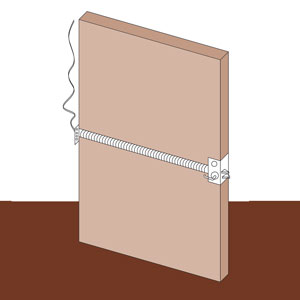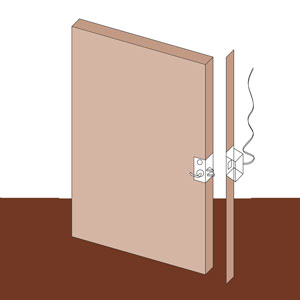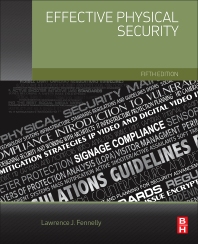1. You are replacing a system in a highly hazardous location as defined by Article 500 of the National Electrical Code. You must
a. remove all abandoned cable.
b. use only explosion-proof equipment.
c. wear protective gear to avoid contaminating the site.
d. use only hand tools to avoid any fire hazard.
2. Why would an installer choose not to use a shear lock?
a. Shear locks can’t be seen when the door is closed.
b. It is much easier to install than a regular maglock.
c. The door has to be closed before applying power to engage the lock.
d. It has about half the holding power of a normal maglock.
3. The site manager refused to allow an electric strike in his Class I, Division 1 facility. Why?
a. It didn’t meet fire code to allow free egress from the facility.
b. He was afraid that a spark from the solenoid activation could cause an explosion.
c. The strike consumed more power than a maglock.
d. All of the above
Answers below.

|
What’s Wrong With This?
An alarm technician installed an access control system in a high-risk facility that required two hour fire-rated doors and partitions. Because of the security nature he installed an electrified mortise lock in the interior doors as requested by the facility manager. The technician drilled through each door to run his wire from the power hinge to the lock. The fire marshal made the owner replace all the doors. Why?

|
Answer to: What’s Wrong With This?
When the technician drilled through each door to run his wire from the power hinge to the lock while installing the electrified mortise lock, he voided the fire rating of the door. The technician should have instead installed a special type of lock called a Hi-Tower Lock, or advised the facility manager to install pre-drilled doors that are fire rated for the installation of a mortise-type lock.
5-Minute Tech Quiz Answers
Here are the answers to 5-Minute Tech Quiz which appears on page 69.
1. c
2. c — Re-applying power before the doors are closed could result in the magnet catching in an abnormal position.
3. b — Class I, Division 1 facilities are areas where flammable gases or vapors can exist under normal operating conditions.
4. d
5. b — Elevators will be recalled to the lobby or other designated floor. Firefighters will override the operation of the elevator including readers with their key for firefighter service.
6. a — The Life Safety Code specifically restricts this use.
7. b — 22/5 Shielded is the correct choice, however using a large cable such as 18/5 would be a better decision.
8. b — Strikes allow for free egress so no other releasing mechanism is required.
9. b
10. c
11. c






